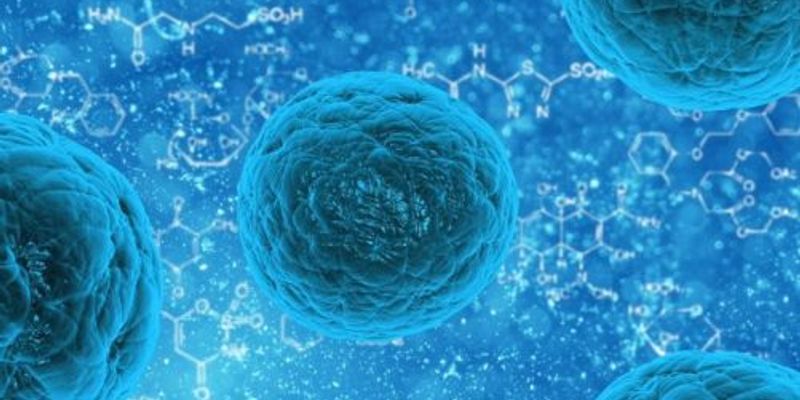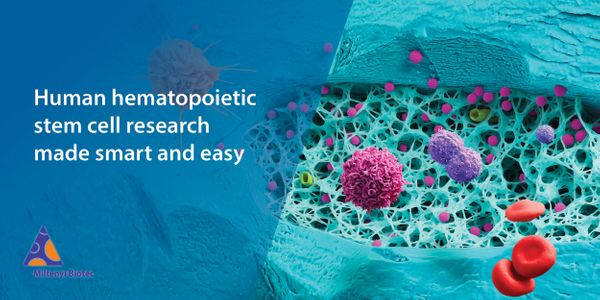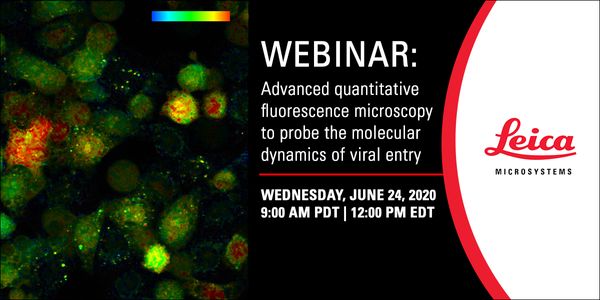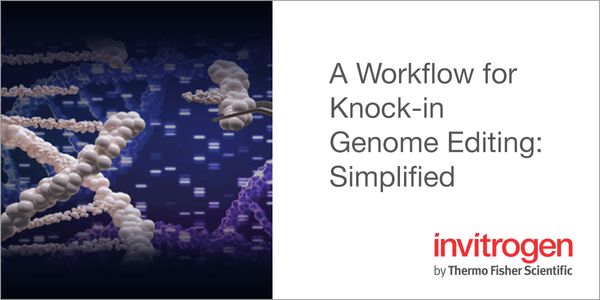3D Culture
3D Culture: is an artificially created environment in which biological cells are permitted to grow or interact with their surroundings in all three dimensions. Unlike 2D environments, a 3D cell culture allows cells in vitro to grow in all directions, similar to how they would in vivo.
-
DEC 09, 2020 | 9:00 AMDATE: December 09, 2020 TIME: 09:00am PST Hematopoietic stem cells (HSCs) ensure homeostasis of blood throughout life. In this webinar, we share insights into the smart and easy isolation, c...November 13, 2020 4:00 PM PST | November 14, 2020 8:00 AM SGTThree-dimensional (3D) cell culture spheroids and aggregates are preferred over monolayer cell culture due to their architectural and functional similarity to solid tumors. To study expressi...November 12, 2020 9:00 AM PST | 4:00 PM GMTThree-dimensional (3D) cell culture spheroids and aggregates are preferred over monolayer cell culture due to their architectural and functional similarity to solid tumors. To study expressi...SEP 30, 2020 | 12:00 AMCombinatorial inhibition of effector and feedback pathways is a promising treatment strategy for KRAS mutant cancers. However, the particular pathways that should be targeted to optimize the...SEP 23, 2020 | 12:00 PMExtracellular ligands bind to receptors on the cell surface leading to receptor internalization. Once internalized into small vesicles, the vesicles fuse with an organelle known as the sorti...SEP 23, 2020 | 10:30 AMIntestinal organoids are self-organizing, 3D structures derived from either pluripotent stem cells or from primary tissues with the abiltiy to recapitulate some of the spatial architecture a...Speaker: Kevin SuSEP 23, 2020 | 7:30 AMCell culture continues to be a critical tool for most life science research and applications. From HeLa to iPSCs and 3D to organoids, culture methods have become more advanced and techniques...Speaker: Marina Wiklander, PhDJUL 29, 2020 | 5:00 PMOver the last decade the cancer research field has seen a number of advances aimed at increasing the efficacy of treatments, reducing toxic side effects, and decreasing attrition rates of dr...JUL 29, 2020 | 12:00 AMThe use of three‐dimensional (3D) culture models is rapidly expanding due to their recognition as representing more structurally and physiologically relevant models of in vivo biology. 3D ce...Speaker: Brad Larson , Valerie Sodi, PhDPresented at: Immuno-Oncology & Cancer Biology Virtual Conference
JUL 29, 2020 | 12:00 AMMetastasis is the main cause of death in cancer patients and one of the most complex biological processes in human diseases (Hanahan et al., 2011). The development of therapies designed to f...JUL 29, 2020 | 12:00 AMThree dimensional (3D) spheroidal cell models have become a mainstay in life science research to provide the most in vivo-like environment. Performing media exchanges and washes with unattac...JUN 30, 2020 | 9:00 AMDATE: June 30, 2020 TIME: 9:00am PDT, 12:00pm EDT QC laboratories perform a critical role in demonstrating pharmaceutical products are consistently manufactured, safe, potent, and pure. At t...JUN 24, 2020 | 9:00 AMDATE: June 24, 2020 TIME: 9:00am PT, 12:00pm ET Some of the key factors in viral pathogenesis are the molecular mechanisms enabling viral entry into cells. Inhibitors of viral entry are ofte...JUN 24, 2020 | 8:00 AMDATE: June 24, 2020 TIME: 8:00am PT The identification of LGR5 + intestinal stem cells helped us to understand various aspects of adult stem cells and led to the establishment of primary 3D...MAY 14, 2020 | 12:00 AMExperimental models that promise to replace animal tests that are currently required for drugs and chemicals are rapidly proliferating. This includes a number of novel solutions offered by b...MAY 12, 2020 | 9:00 AMNEW DATE: Date: May 12, 2020 Time: 9:00am PDT, 12:00pm EDT...MAR 24, 2020 | 11:00 AMDATE: March 24, 2020 TIME: 11:00am PT, 2:00pm ET While in vitro cell culture has long been used to study neurological diseases, researchers have come to the realization that 2-D systems do n...FEB 26, 2020 | 9:00 AMDATE: February 26, 2020 TIME: 9:00am PST 3D cell culture and analysis and the study of organoids and spheroids are becoming more prevalent as a research method in publications as traditional...JAN 23, 2020 | 9:00 AMDATE: January 23, 2020 TIME: 9:00am PST, 12:00pm EST...JAN 01, 2020 | 6:00 AMMicrophysiological systems (MPS), also known as organ-on-chips, are small scale in vitro cell cultures which mimic facets of tissue or organ level function. MPS frequently utilise primary hu...Speaker: Tomasz Kostrzewski, PhDPresented at: Drug Discovery & Development Virtual Event Series 2020
JAN 01, 2020 | 6:00 AMThe aim of the lecture is to give an insight into the use of 3D liver micro tissues (3D liMTs) in drug discovery and translational safety. In translational toxicology, 3D LiMTs have a high i...JAN 01, 2020 | 6:00 AMThe OrganoPlate is a microtiterplate based Organ-on-a-Chip platform for high throughput drug safety and efficacy screening. It contains up to 96 cell culture chambers that allow co-culture o...Speaker: Sebastiaan Trietsch, PhDPresented at: Drug Discovery & Development Virtual Event Series 2020
JAN 01, 2020 | 6:00 AM“The poor translatability of early-stage preclinical models is a major setback in oncology drug development. Immortalized cell lines, that are extensively used in drug screens, undergo...JAN 01, 2020 | 6:00 AMWith an increasing push to improve safety, efficacy, and efficiency throughout the drug development pipeline, researchers are evermore looking to improve the predictive capacity of their in...
DEC 09, 2020 | 9:00 AM
DATE: December 09, 2020 TIME: 09:00am PST Hematopoietic stem cells (HSCs) ensure homeostasis of blood throughout life. In this webinar, we share insights into the smart and easy isolation, c...
November 13, 2020 4:00 PM PST | November 14, 2020 8:00 AM SGT
Three-dimensional (3D) cell culture spheroids and aggregates are preferred over monolayer cell culture due to their architectural and functional similarity to solid tumors. To study expressi...
November 12, 2020 9:00 AM PST | 4:00 PM GMT
Three-dimensional (3D) cell culture spheroids and aggregates are preferred over monolayer cell culture due to their architectural and functional similarity to solid tumors. To study expressi...
SEP 30, 2020 | 12:00 AM
Combinatorial inhibition of effector and feedback pathways is a promising treatment strategy for KRAS mutant cancers. However, the particular pathways that should be targeted to optimize the...
SEP 23, 2020 | 12:00 PM
Extracellular ligands bind to receptors on the cell surface leading to receptor internalization. Once internalized into small vesicles, the vesicles fuse with an organelle known as the sorti...
SEP 23, 2020 | 10:30 AM
Intestinal organoids are self-organizing, 3D structures derived from either pluripotent stem cells or from primary tissues with the abiltiy to recapitulate some of the spatial architecture a...
Speaker:
Kevin Su
SEP 23, 2020 | 7:30 AM
Cell culture continues to be a critical tool for most life science research and applications. From HeLa to iPSCs and 3D to organoids, culture methods have become more advanced and techniques...
Speaker:
Marina Wiklander, PhD
JUL 29, 2020 | 5:00 PM
Over the last decade the cancer research field has seen a number of advances aimed at increasing the efficacy of treatments, reducing toxic side effects, and decreasing attrition rates of dr...
JUL 29, 2020 | 12:00 AM
The use of three‐dimensional (3D) culture models is rapidly expanding due to their recognition as representing more structurally and physiologically relevant models of in vivo biology. 3D ce...
Speaker:
Brad Larson
, Valerie Sodi, PhD
Presented at: Immuno-Oncology & Cancer Biology Virtual Conference
JUL 29, 2020 | 12:00 AM
Metastasis is the main cause of death in cancer patients and one of the most complex biological processes in human diseases (Hanahan et al., 2011). The development of therapies designed to f...
JUL 29, 2020 | 12:00 AM
Three dimensional (3D) spheroidal cell models have become a mainstay in life science research to provide the most in vivo-like environment. Performing media exchanges and washes with unattac...
JUN 30, 2020 | 9:00 AM
DATE: June 30, 2020 TIME: 9:00am PDT, 12:00pm EDT QC laboratories perform a critical role in demonstrating pharmaceutical products are consistently manufactured, safe, potent, and pure. At t...
JUN 24, 2020 | 9:00 AM
DATE: June 24, 2020 TIME: 9:00am PT, 12:00pm ET Some of the key factors in viral pathogenesis are the molecular mechanisms enabling viral entry into cells. Inhibitors of viral entry are ofte...
JUN 24, 2020 | 8:00 AM
DATE: June 24, 2020 TIME: 8:00am PT The identification of LGR5 + intestinal stem cells helped us to understand various aspects of adult stem cells and led to the establishment of primary 3D...
MAY 14, 2020 | 12:00 AM
Experimental models that promise to replace animal tests that are currently required for drugs and chemicals are rapidly proliferating. This includes a number of novel solutions offered by b...
MAY 12, 2020 | 9:00 AM
NEW DATE: Date: May 12, 2020 Time: 9:00am PDT, 12:00pm EDT...
MAR 24, 2020 | 11:00 AM
DATE: March 24, 2020 TIME: 11:00am PT, 2:00pm ET While in vitro cell culture has long been used to study neurological diseases, researchers have come to the realization that 2-D systems do n...
FEB 26, 2020 | 9:00 AM
DATE: February 26, 2020 TIME: 9:00am PST 3D cell culture and analysis and the study of organoids and spheroids are becoming more prevalent as a research method in publications as traditional...
JAN 23, 2020 | 9:00 AM
DATE: January 23, 2020 TIME: 9:00am PST, 12:00pm EST...
JAN 01, 2020 | 6:00 AM
Microphysiological systems (MPS), also known as organ-on-chips, are small scale in vitro cell cultures which mimic facets of tissue or organ level function. MPS frequently utilise primary hu...
Speaker:
Tomasz Kostrzewski, PhD
Presented at: Drug Discovery & Development Virtual Event Series 2020
JAN 01, 2020 | 6:00 AM
The aim of the lecture is to give an insight into the use of 3D liver micro tissues (3D liMTs) in drug discovery and translational safety. In translational toxicology, 3D LiMTs have a high i...
JAN 01, 2020 | 6:00 AM
The OrganoPlate is a microtiterplate based Organ-on-a-Chip platform for high throughput drug safety and efficacy screening. It contains up to 96 cell culture chambers that allow co-culture o...
Speaker:
Sebastiaan Trietsch, PhD
Presented at: Drug Discovery & Development Virtual Event Series 2020
JAN 01, 2020 | 6:00 AM
“The poor translatability of early-stage preclinical models is a major setback in oncology drug development. Immortalized cell lines, that are extensively used in drug screens, undergo...
JAN 01, 2020 | 6:00 AM
With an increasing push to improve safety, efficacy, and efficiency throughout the drug development pipeline, researchers are evermore looking to improve the predictive capacity of their in...



















